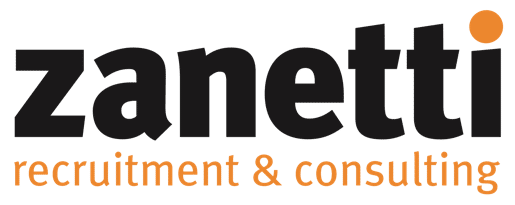Small business has many challenges. The greatest one we experience is the attraction & retention of the right people.
As a business owner (and also engaged to support businesses to source culturally aligned competent staff) I know it can be a roller coaster ride.
Some think it’s best defined as an art wrapped in some science. No doubt emotional intellect, due process, assessment tools, the right questioning and assessment all play a part.
What’s common from our experience?
Most think recruitment sucks. It’s too time consuming to properly do in-house and too expensive to outsource.
But these are the two choices small business owners have (excluding iterations of both).
But these are the two choices small business owners have (excluding iterations of both).
- The principals/directors learn how to effectively recruit talent for their business (or educate & charge a team member with that responsibility).
- Outsource to a competent third party.
I suppose there is a third choice. That is to recruit the way you always have. A sales manager I worked with over 25 years ago always said; “The more you do of what you’re doing, the more you’ll get of what you’ve got!” If it’s not working for you today, then this really is not an option!
Whichever way you choose to recruit staff, getting it wrong can have long term financial and cultural consequences.
To quote Jim Collins: “getting the right people on the bus” is the first step. “Leaders of companies that go from good to great start not with “where” but with “who.” They start by getting the right people on the bus, the wrong people off the bus, and the right people in the right seats. And they stick with that discipline—first the people, then the direction—no matter how dire the circumstances”.
His Experience?
Of all the staff engaged and the process he managed, the data showed almost 50% of the staff recruited were not retained within the business beyond the probationary period. Whether his business managed the process or he outsourced to a recruitment firm!
Those that were recruited and retained do enjoy the philosophy, the learning they received and the business environment. In the main, those that stayed were still in the business 3 to 5 years later.
If they did move to a new company, they moved for career progression that could not be achieved in his business or for personal reasons, not because they didn’t enjoy working there. They leave with a strong sense of being valued and endorsement to future employers from the directors.
Clearly he had a good structure and culture. However there was a real problem determining “who fit on his bus”.
What was the common theme?
Speed to market to replace a resource compromised due process and better judgement in the hiring decisions. Not the only theme but clearly one that stood out.
The recruitment process would only begin when a staff member resigned. This is a common key issue for small business.
You see, if not much thought or forward planning is placed on this inevitable occurrence, losing a resource and the pressure of replacement (generally within 2 to 4 weeks) is not ideal in a small team. Equally, you’re asking a candidate to quickly make a judgement on your business – the people, structure and culture.
If you then engage the wrong person in haste, at some point in future, it places immense pressure on the directors to manage out the non-culturally aligned or non-performing staff member. The employee may equally have felt they made a mistake in accepting the role. This places strain on the employee to consider options.
The lost productivity for a manager and his team through the interview process, orientation and management in the first 3 to 6 months, to then let someone go and start the process again is challenging to say the least. Not just the impact on productivity but also emotionally within the team.
A candidate who has left a role to join your team and subsequently finds themselves with no employment is equally challenging.
Even worse, those managers that choose to avoid conflict can sometimes retain a staff member in the business with damaging consequences.
So what can we learn from his experience?
Hire Slow, Fire Fast — What we really refer to here is: “Hire with purpose and manage out with consideration”
The recruitment process would only begin when a staff member resigned. This is a common key issue for small business.
You see, if not much thought or forward planning is placed on this inevitable occurrence, losing a resource and the pressure of replacement (generally within 2 to 4 weeks) is not ideal in a small team. Equally, you’re asking a candidate to quickly make a judgement on your business – the people, structure and culture.
If you then engage the wrong person in haste, at some point in future, it places immense pressure on the directors to manage out the non-culturally aligned or non-performing staff member. The employee may equally have felt they made a mistake in accepting the role. This places strain on the employee to consider options.
The lost productivity for a manager and his team through the interview process, orientation and management in the first 3 to 6 months, to then let someone go and start the process again is challenging to say the least. Not just the impact on productivity but also emotionally within the team.
A candidate who has left a role to join your team and subsequently finds themselves with no employment is equally challenging.
Even worse, those managers that choose to avoid conflict can sometimes retain a staff member in the business with damaging consequences.
But hiring slow creates another challenge in the eyes of small business owners and hiring managers!
The hire slow methodology is great in theory but many businesses say they can’t carry the extra workload for months on end without an adverse consequence on staff morale and quality client experience.
There is a way you can hire with speed & purpose!
That’s when both parties have already met, know and trust each other and the business structure and culture is aligned. This can only happen when you proactively create and manage an “Ongoing Talent Pool”.
In my next post, I’ll share how to improve the selection of the right people through the following.
- What to consider when creating an in-house recruitment resource or outsourcing to a competent third party.
- A successful method to recruit with speed without compromising productivity — The Ongoing Talent Pool.





